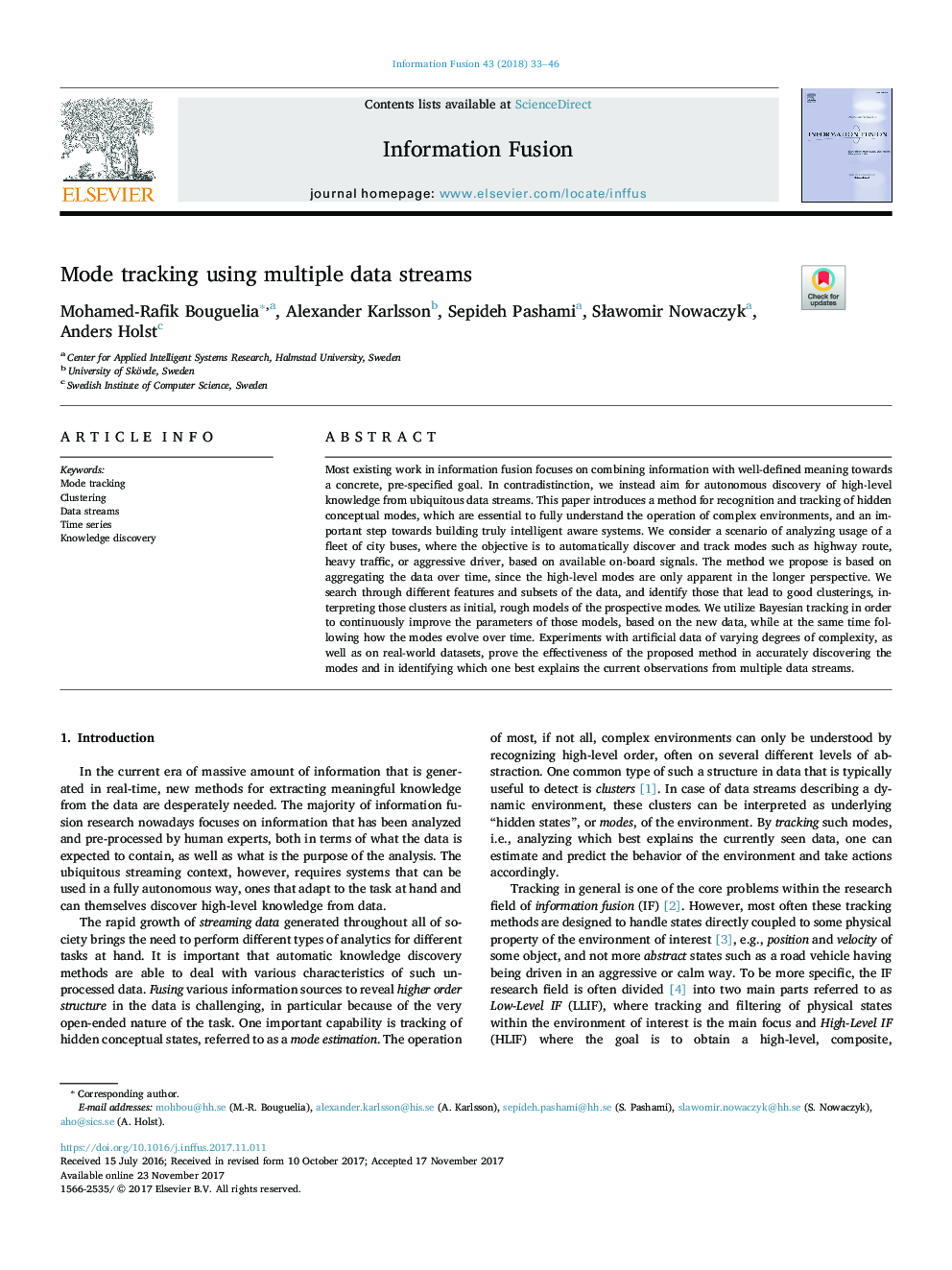| Article ID | Journal | Published Year | Pages | File Type |
|---|---|---|---|---|
| 6937961 | Information Fusion | 2018 | 14 Pages |
Abstract
Most existing work in information fusion focuses on combining information with well-defined meaning towards a concrete, pre-specified goal. In contradistinction, we instead aim for autonomous discovery of high-level knowledge from ubiquitous data streams. This paper introduces a method for recognition and tracking of hidden conceptual modes, which are essential to fully understand the operation of complex environments, and an important step towards building truly intelligent aware systems. We consider a scenario of analyzing usage of a fleet of city buses, where the objective is to automatically discover and track modes such as highway route, heavy traffic, or aggressive driver, based on available on-board signals. The method we propose is based on aggregating the data over time, since the high-level modes are only apparent in the longer perspective. We search through different features and subsets of the data, and identify those that lead to good clusterings, interpreting those clusters as initial, rough models of the prospective modes. We utilize Bayesian tracking in order to continuously improve the parameters of those models, based on the new data, while at the same time following how the modes evolve over time. Experiments with artificial data of varying degrees of complexity, as well as on real-world datasets, prove the effectiveness of the proposed method in accurately discovering the modes and in identifying which one best explains the current observations from multiple data streams.
Related Topics
Physical Sciences and Engineering
Computer Science
Computer Vision and Pattern Recognition
Authors
Mohamed-Rafik Bouguelia, Alexander Karlsson, Sepideh Pashami, SÅawomir Nowaczyk, Anders Holst,
